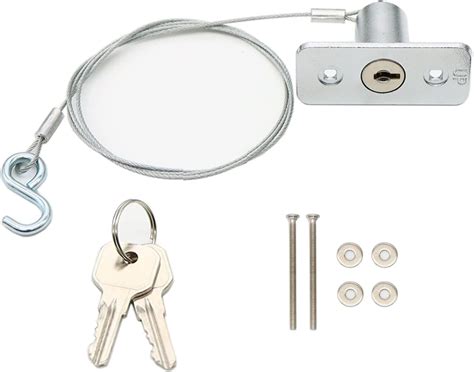Emergency Garage Door Opener Shutdown: Quick Steps
A malfunctioning garage door opener can be a frustrating and even dangerous situation. Whether it's unexpectedly reversing, making strange noises, or simply refusing to open or close, knowing how to shut down your system safely and efficiently is crucial. This guide provides quick steps for emergency shutdown, along with troubleshooting tips and preventative measures.
What to Do When Your Garage Door Opener Malfunctions?
Before diving into emergency shutdown procedures, it's important to understand why your opener might malfunction. Common culprits include:
- Power surges or outages: These can easily disrupt the opener's electronic components.
- Broken springs or cables: These are safety mechanisms and, when damaged, can cause the door to fall unexpectedly.
- Remote control issues: Low batteries or damage to the remote can prevent operation.
- Track obstructions: Leaves, debris, or even a toy can obstruct the track, causing the opener to malfunction.
- Sensor misalignment: The safety sensors at the bottom of the door need to be properly aligned; otherwise, the door won't operate.
- Internal mechanical failure: Over time, the motor, gears, or other internal components may wear down and break.
How to Perform an Emergency Shutdown: Quick Steps
The most effective emergency shutdown method depends on the type of opener you have. Most modern garage door openers feature a manual release cord.
Step 1: Locate the Emergency Release Cord: This cord usually hangs down from the opener's motor unit. It might be hidden behind a cover or tucked away.
Step 2: Pull the Cord: Gently but firmly pull the cord. This will disconnect the opener from the door, allowing you to manually operate it. It may require some effort.
Step 3: Manually Operate the Door: Once disconnected, you can now lift or lower the door by hand. This is significantly more challenging with heavier garage doors, potentially requiring assistance.
Step 4: Address the Problem: Once the door is safely open or closed, try to identify and fix the issue. This could involve replacing a broken spring (extremely dangerous - call a professional!), clearing track obstructions, checking the sensors, or replacing batteries in the remote.
What if I Can't Find the Emergency Release Cord?
If your garage door opener lacks a visible release cord, or if it is inaccessible, you may need to consult your owner's manual. Some older models have alternative disconnection methods, which can vary significantly depending on the manufacturer and model. If you are unable to locate the release method, contact a qualified garage door technician.
How to Prevent Garage Door Opener Issues
Regular maintenance is essential to preventing unexpected malfunctions.
- Inspect the Tracks: Regularly check the tracks for any debris or obstructions. Clean and lubricate them as needed.
- Check the Springs and Cables: Inspect these critical components for any signs of wear and tear or damage. Do not attempt repairs yourself – call a professional.
- Test the Safety Sensors: Ensure they are clean and properly aligned. A misaligned sensor will prevent the door from closing or opening.
- Replace Worn Parts: Don't hesitate to replace worn-out components such as belts, gears, or the motor. This prevents more serious and costly problems.
What are the Safety Precautions When Working With Garage Doors?
Garage doors are heavy and powerful pieces of machinery. When working with your garage door, always prioritize safety:
- Never work under a raised door.
- Always disconnect the power to the opener before working on any components.
- If you are unsure about any repair, contact a qualified garage door technician.
This comprehensive guide helps you navigate an emergency garage door opener shutdown situation efficiently and safely. Remember, safety is paramount; if you are uncomfortable performing any repairs yourself, consult a professional. They possess the expertise and tools to handle these situations securely.

